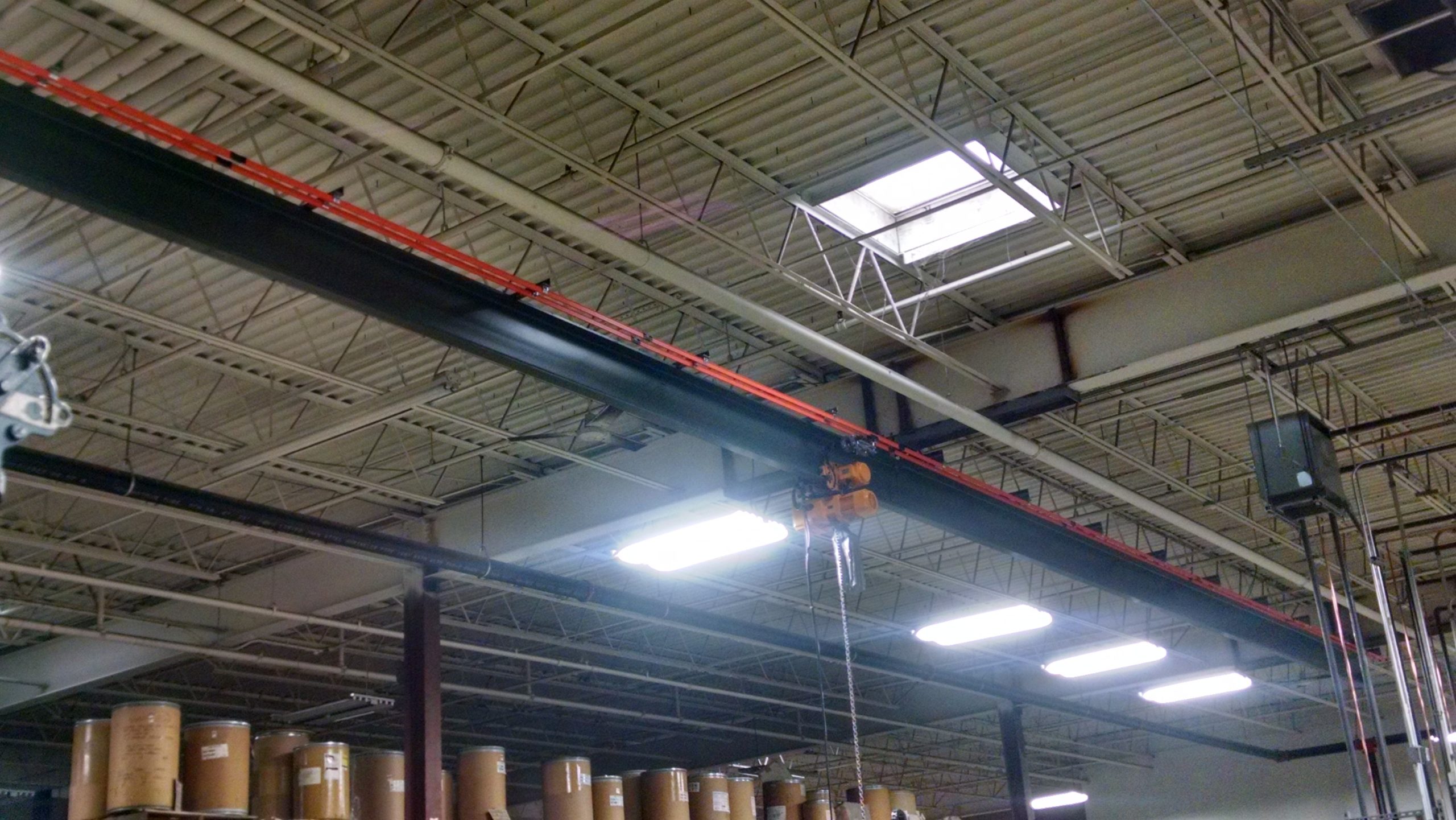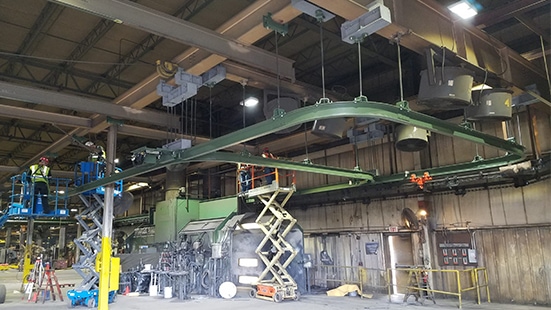Monorail; definition (noun) (as it relates to material handling)
A single rail or beam, straight or curved, designed to support and transport a load, typically elevated with single or multiple trolleys traveling along it’s horizontal axis. Monorail System; is the joining of two movements. The horizontal (traverse) motion, achieved by utilizing a trolley and the vertical (raise and lower) motion, achieved by utilizing a hoist.
Overview of Monorail Systems
Within the material handling sector, monorail systems can be among the simplest way to transport materials. With overhead movement on two axis paths, the horizontal (x-axis path) and the vertical (y-axis path) these systems facilitate the transport of bulky and heavy loads through a facility without infringing on valuable floor space and maximizing the utilization of vertical space. While they are generally used in straight line configurations, they can be tailored to include curves, switches, spurs and lift sections, enabling the user to go around, over or under obstacles, hit multiple target points, create assembly line layouts and move product efficiently through their facility from one end to the other. Monorails can be found throughout industry and around the world. They have been a proven solution from the very elementary to the most complex material handling applications.
Monorails are available in almost endless variations and configurations. Monorails can be electrified. Enabling the use of drive tractors, motor driven trolleys, powered hoists and other powered equipment.
Monorails can be manually (push/pull) operated, allowing the operator to move the load at his or her pace and precisely place the load where it needs to go. Monorails can be configured to use gravity as an added advantage for conveying product. Monorails can also be fitted with air line systems in order to feed pneumatic equipment.


Advantages of Monorail Systems
Monorails offer several advantages to industry professionals. Some of the most notable are outlined below:
- Greater adaptability and customizability – Monorails are compact and easy to modify to accommodate various requirements and restrictions, making them easier to fit within limited-space facilities and more flexible in the face of change. They can be customized with a variety of attachments, such as below-the-hook add-ons, end effectors, and specialized tooling, to suit different loads and products.
- More ergonomic equipment design – These devices eliminate the need for workers to manually move loads, which reduces the amount of physical strain on them and lowers the risk of injury.
- Better movement, positioning, and control – Monorails move loads in direct paths, free from most obstacles, which allows operators to bring goods and supplies to more precise locations at faster speeds. The use of remote-control technology enables operators to remain away from the load, further improving efficiency and reducing the risk of injury.
- Lower maintenance costs, labor expenses, and risk of product damage – Compared to other lifting devices, monorail systems have a much simpler design, which results in lower maintenance requirements without sacrificing functionality or capacity. They can cover larger areas within a facility without the need for manual worker involvement, which translates to greater employee productivity. Additionally, as they carry loads overhead, out of the way of most obstacles, they decrease the risk of products sustaining damage during transport.
Monorail Solutions From Maximum Material Handling
Maximum Material Handling has furnished and installed countless monorail systems of all capacities over the years. From S or W Beam Systems, to Enclosed Track or Patented Track Systems – we can design and install nearly any system to meet your application.
For additional information about our monorail systems and other material handling solutions, contact us today. One of our team members will be happy to address any concerns and answer any questions you may have.
